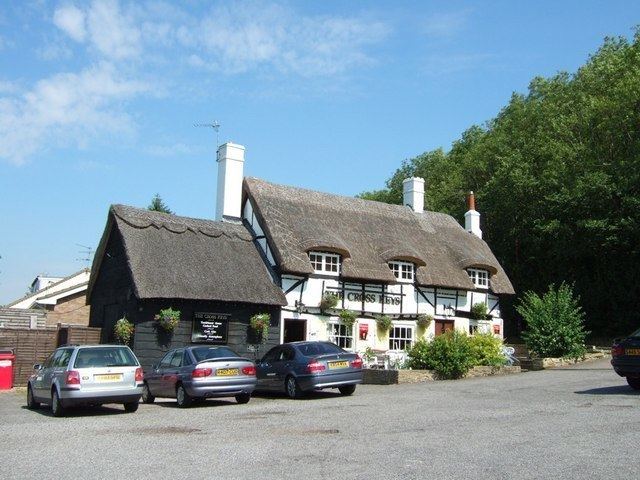OS grid reference SP985215 Unitary authority | Civil parish Totternhoe Local time Monday 6:00 PM | |
 | ||
Population 1,180 (2001 census)1,172 (2011 Census) Weather 14°C, Wind SW at 21 km/h, 54% Humidity | ||
Totternhoe is a village and civil parish in the Manshead hundred of the county of Bedfordshire, England.
Contents
- Map of Totternhoe UK
- Overview
- Geography
- History
- Sport and leisure
- Notable buildings and sites
- Adjacent towns and villages
- References
Map of Totternhoe, UK
Overview
Totternhoe is an ancient village in southern Bedfordshire, near Dunstable and Leighton Buzzard. Totternhoe Knolls has been a fort for many peoples including Romans and Normans. Behind the knoll is a large chalk quarry producing Totternhoe Stone and modern lime kilns.
The parish church of Saint Giles dates from the 13th century.
The village has about 300 homes housing about 1,000 people.
There are several farms and a small lower school, Totternhoe Lower School.
The village has two public houses, The Old Farm Inn in Church End and The Cross Keys in Middle End. Another pub in Church End, The Bell, was converted into a private home in about 1992.
Geography
The village is long and thin and is separated into three parts:
The civil parish includes the foot of Dunstable Downs, including the London Gliding Club.
History
Totternhoe Roman villa dates to the fourth century.
The Domesday Book of 1086 recorded the village as Totene Hou, meaning "look out house" and "spur", presumably describing forts on the Knoll.
The 1881 Census recorded Totternhoe's population as about 700, of whom 54% were female.
Totternhoe's common lands were not enclosed until 1892.
Sport and leisure
Totternhoe has a Non-League football team Totternhoe F.C. who play at Church End recreation ground.
Notable buildings and sites
As one travels west from Dunstable one may find the following buildings.
Adjacent towns and villages
The village shares boundaries with the following parishes:
